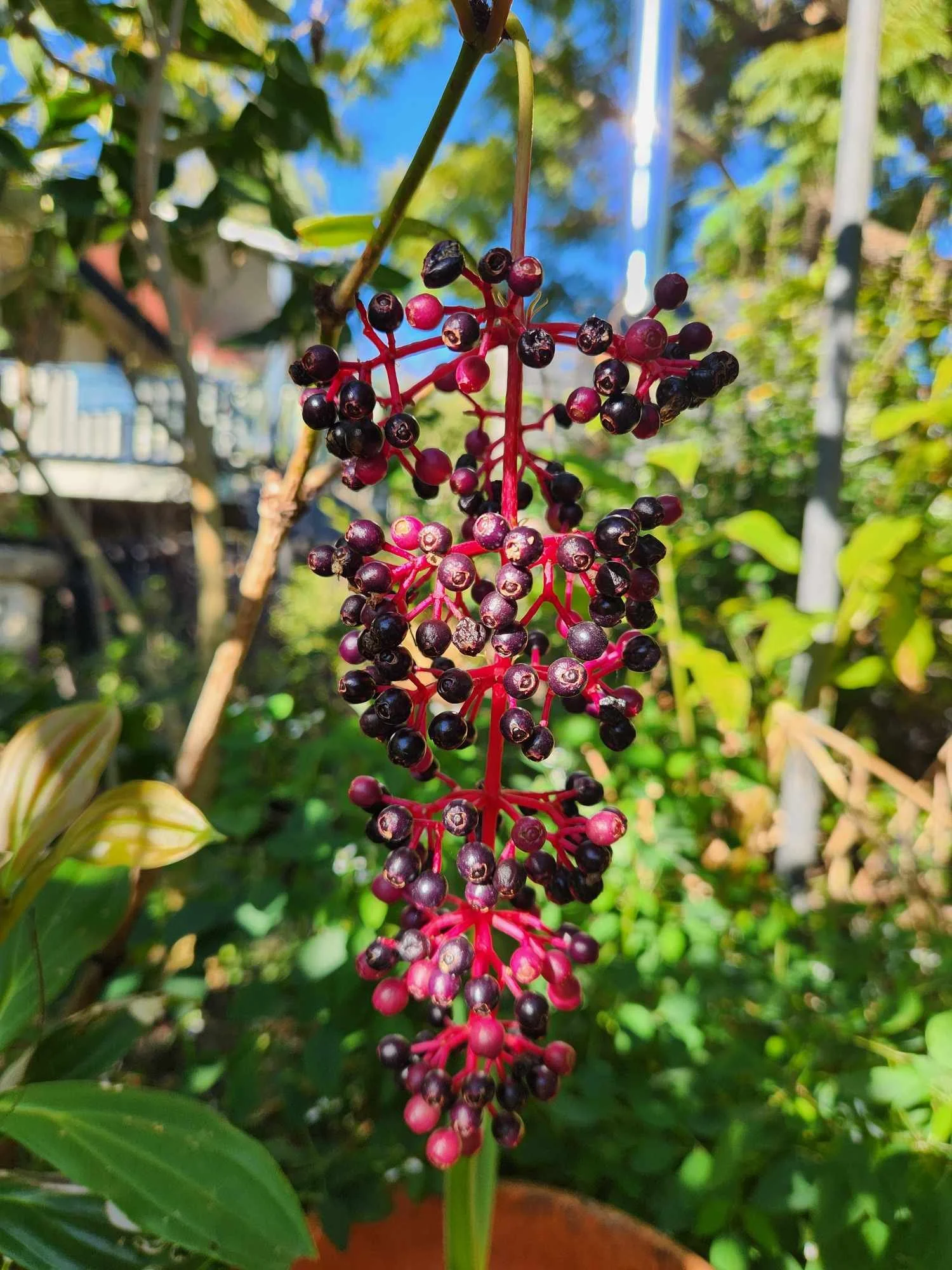Magestical Medinilla
How much more magestic can you sound? ‘Chandelier plant’ conjures all sorts of elegant images doesn’t it? They’re also called rose grapes, showy Asian grapes, Philippine orchids and pink lantern plant. They aren’t grapes, orchids or the female version of a superhero. I’m referring to the Medinilla genus, a tropical, primarily epiphytic/semi-epiphytic genus with species originating across Africa and South East Asia. We even have our own native Queensland Daintree medinilla (M. balls-headleyi). They are generally showy plants with beautiful panicles of coloured flowers which turn into brightly coloured berries. If grown in hanging baskets they dangle gracefully and look just like mini-chandeliers.
A dangling chandelier of berries. Note the leaves and their deep veins.
Popular species for sale include M. magnifica, M. myriantha and M. pendula but there are around 400 species in the genus. The genus name comes from José de Medinilla y Pineda who was the govenor of the Mariana Islands around 1820. If you’re like me and are a bit rusty on your georgraphy - the Mariana Islands are an archipeligo south of Japan which run along the Mariana Trench. Medinilla medinillana is native to the Mariana islands (and other islands in the region), and is understood to be the first recorded in the genus. José must have been an important guy to have it named after him twice, or someone was doing some hard core sucking-up…
Medinilla are a member of the Melastomataceae family - the same as tibouchina and centradenia. A close look at the leaf shape with the deep veins and individual flowers with their prominent stamens shows the similarities!
The individual flowers are very muich like other members of the Melastomataceae family.
Considering their natural growth habitat in tree nooks and forest floors, Medinilla are perfect for both hanging baskets and damp protected spots. They can be grown indoors but bear in mind they come from the tropics and like a bit of humidity so can be tricky. The potting mix or soil should be fertile, moist and free draining. Think leaf litter in the forest!
Different varieties grow to different sizesl; take that into consideration when planting, but most of all make sure you pop it somewhere you can admire the hanging flowers and berries!
Berries gradually turning purple. I am not sure what species my Medinilla is - I grew it from a cutting off a friends plant. It’s happy growing in the ground in my sandy loam and around 1m high.


